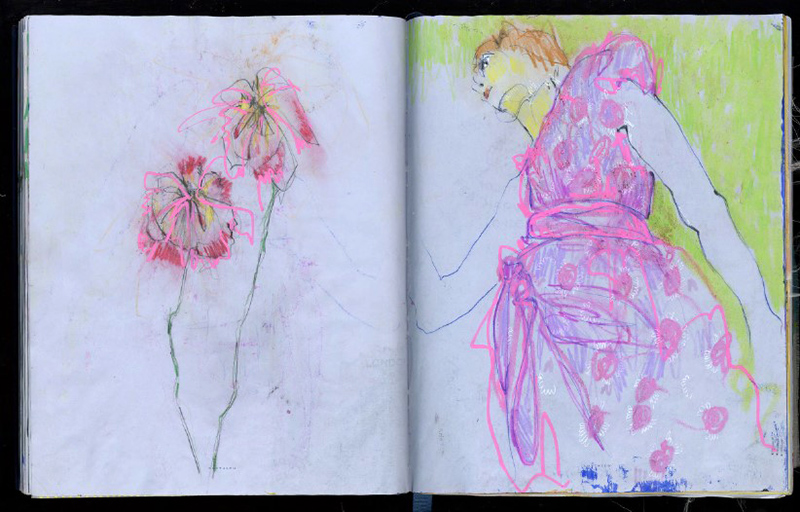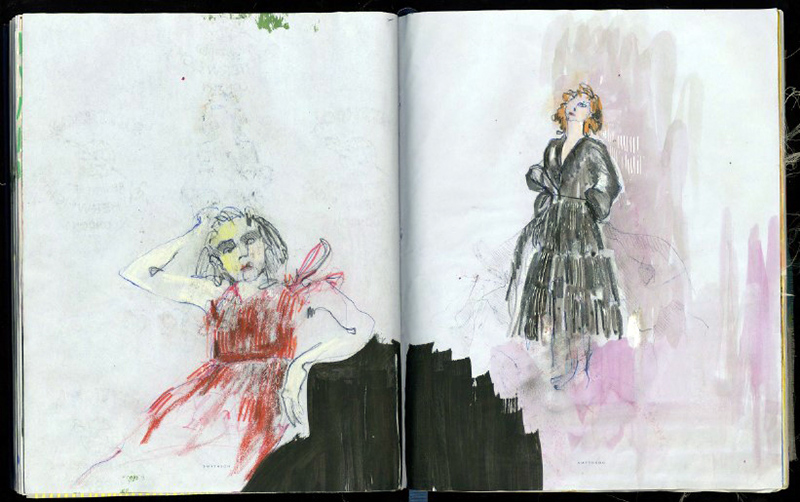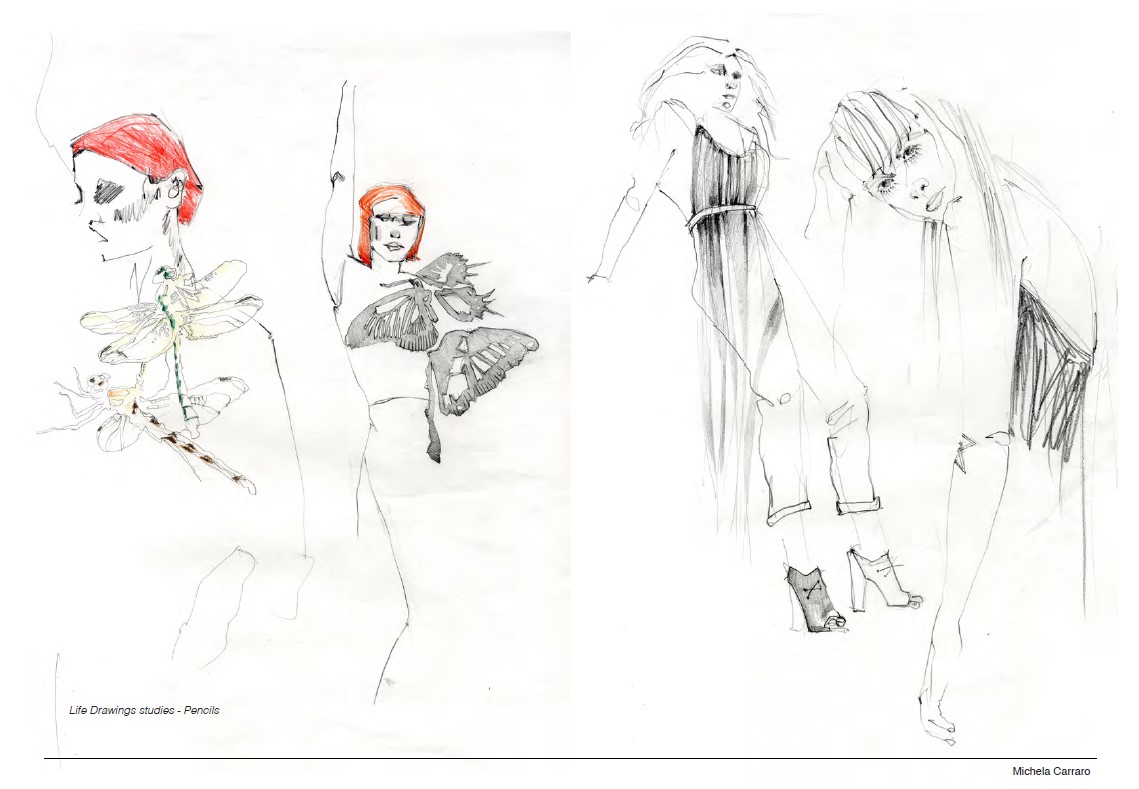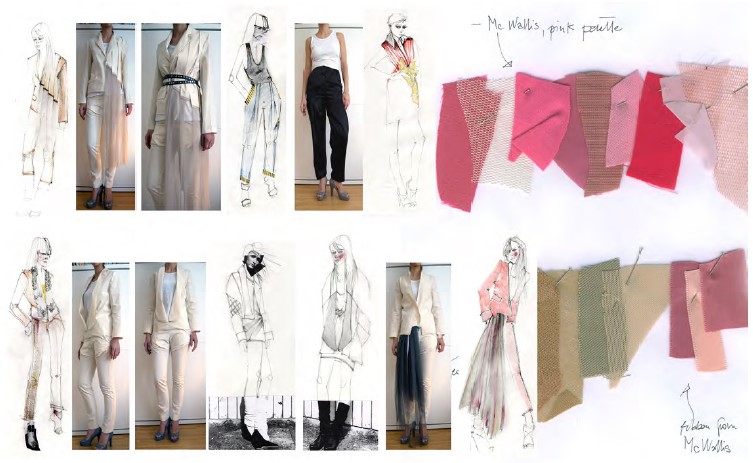Can you tell us a little about your background as an artist?
I studied fine art in Venice, then I started to move away from traditional practices at the Academy in Bologna and began experimenting with different materials, sculpture and metal. Fashion became an important part of what I do.
The figure has been a consistent theme for me, from traditional life drawing to something more abstract and expressive.
When you’re drawing garments, you may need to illustrate something techincally, but you also have to be expressive to translate a feeling for your collection. The figure is a way for me to visualize ideas and to convey a mood.

How has your work evolved through your journey with fashion?
I lived in London and New York for many years. I did courses in fashion illustration, jewellery and fashion design. This was in the late 90s, a very experimental time in fashion.
I worked as an assistant stylist at the magazine Arena, then took an internship at Alexander McQueen, working on textiles and prototyping. These experiences helped me grow creatively and made me appreciate how different pathways such as music, photography, fashion and drawing, can blend beautifully.
That, for me, was significant. Now I use a variety of approaches into expression: I go from drawings to ceramics, from clothing to textiles.
What excites you the most about teaching at the Newlyn School of Art?
Art schools, generally, are not what they used to be. Newlyn feels how you want an art school to feel – practical, encouraging and hands on. I love that they foster being experimental, too.
The courses that Newlyn School of Art offer are amazing. You have this opportunity to work so closely with leading practitioners and artists – I think that's very special. It allows participants to really absorb what's being taught and explore their own potential. I love teaching too, so I'm really excited to get started!

How does The Figure programme at Newlyn School of Art differ from other art courses related to the figure?
This is a very practical and hands-on programme, not just simply sitting down and drawing a model, it is much more than that.
We will be introducing different ways of thinking about the figure, with the aim of equipping participants with a range of approaches to explore between sessions.
This programme is designed to allow tremendous freedom of experimentation. With figure drawing, fashion illustration, or fine art it's not something that you can master in one go. The depth and the confidence comes with layering different techniques and through being free to make mistakes, and move on.
Could you tell us a bit about the structure of The Figure programme?
Each weekend explores a different theme or technique. In one session, for instance, we’ll look at scale. When you enlarge something, you have to think about the dominance of a shape or form – how to express that in your lines; how much pressure to use. Then you consider your materials too: charcoal or pencil has a very different effect to using paint or ink with bushes. We will play with these ideas and take inspiration from other artists who have explored similar themes.

What are the benefits of running The Figure over several months?
The course runs over several full weekends – so we can work all day on day 1, reflect together, and then take it further the following day. This reflection time is really important for sharing ideas, celebrating what everyone has achieved and savouring progress. It’s a flow of: explore, experiment, expand, reflect - then repeat!
Drawing is physically, mentally and emotional stimulating, so it’s good to have buffers of time between sessions in which participants can integrate, practice and expand their practices at home. All of that will just keep building throughout the year. It wouldn't be the same if the course was all done in two weeks – you’d feel bombarded then exhausted at the end! This is the perfect balance.
Being staggered over several months also creates a strong and supportive peer community in the group.
What are you looking forward to bringing to this programme?
I think composition is extremely important. It's how you frame the body; it's the position of the body; it's the section of the body that you focus on that brings something different in terms of communication or language. Composition is absolutely key in my own practice, and will be a cornerstone of this course as well.

How do you know Rob Unett?
Rob and I are very good friends. We have have worked on several projects together and both teach at the London School of Fashion. When he asked me to come on board with this, I was very excited.
Rob and I really bring energy into the room! Rob gets everyone involved; it's very inspiring. It's so special to have a small cohort to work with - the two of us can really bring out the individuality of each student.

Michela Carraro was speaking to Kari Herbert. Michela is co-lead on The Figure.